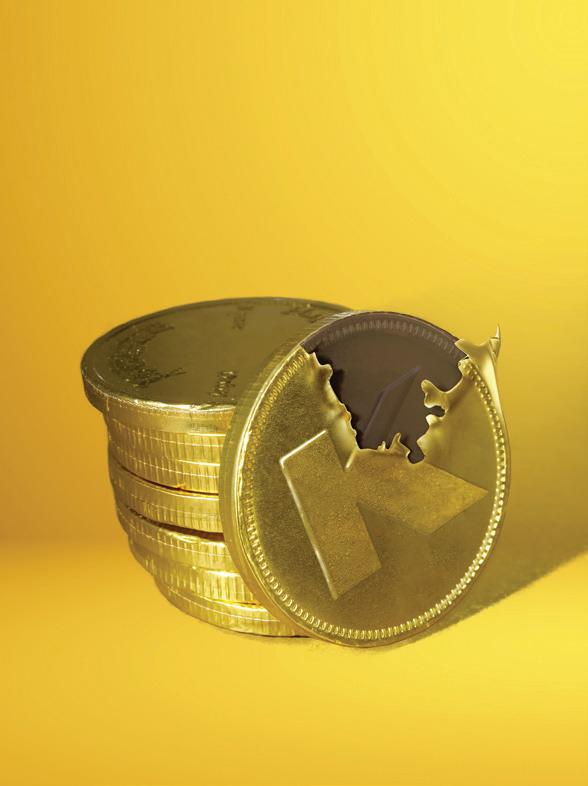
5 7 8 10 14 15 18 20 22 23
QUESTIONS FOR THE


5 7 8 10 14 15 18 20 22 23
QUESTIONS FOR THE
CHAMPION OF KOSHER CHANUKAH RECIPE YESHIVA DOUGHNUTS
YOUR KOSHER KITCHEN –SPOTLIGHT ON STOVETOPS by Rabbi Yakov Teichman
WHAT’S COOKING WITH THE TEMPERATURE OF WINE by Rabbi Benzion Chanowitz
A CLOSER LOOK CHOCOLATE CHIPS by Rabbi Sholom Ber Hendel
DAIRY BREAD by Rabbi Sholom Kesselman
185 WAYS ~ KOSHERED YOUR WORLD IN 2018
WHO’S BEHIND THE ~ Interview With Rabbi Levi Y. Schapiro
CHASSIDIC INSIGHTS –MEHADRIN MIN HAMEHADRIN
SOUL NUTRITION by Rabbi Chaim Fogelman
The word “Chanukah” comes from the same root as “chinuch”, meaning to teach, train and educate. There are many ways to teach and learn new skills, but the best tried and proven methods include hands on learning and leading by example.
A person can study numerous books and watch dozens of instructional videos on how to swim, but nothing will compare to getting into the water and actually learning to swim with an instructor. Kashrus is no different; certainly one must learn and know the Shulchan Oruch in order to determine what is kosher and what is not, but actually visiting manufacturing facilities and sharing experiences with others in the field is the best way to sharpen and master the skills needed to provide kashrus without compromise.
My father, Rabbi Shmuel Fogelman OB”M HK”M, who just recently passed away, was an educator for most of his life. As a teacher, then a principal, and even as an administrator, he taught by example and paid close attention to even the smallest details. Growing up in his shadow, I remember how he would do his best to make the subjects I learned in yeshiva come alive and be relevant to my life.
I am sure he would have loved to see our International Mashgichim Conference, the yearly conference I help organize, that just took place with over a hundred field mashgichim (who collectively visit thousands of manufacturing facilities across the globe) in attendance. They came together to discuss the latest developments in the world of kashrus, new manufacturing techniques and, together, find better ways to implement and execute higher standards of supervision.
KOSHER SPIRIT Chanukah 5779
EDITOR-IN-CHIEF:
Rabbi Chaim Fogelman
EDITOR:
Dina Fraenkel
DESIGN: Spotlight Design
We welcome your comments, submissions and letters to the editor.
Mail: 391 Troy Avenue, Brooklyn, NY 11213
Email: editor@kosherspirit.com
© 2018. No portion of this publication may be reprinted without written consent from the publisher.
As a former student of my father told me at the shiva, “Your father proved that strictness and kindness are not a contradiction.” At the ~, we strive to prove that as well.
Wishing you and your families a freilichen Chanukah,
Rabbi Chaim Fogelman Editor in Chief
Goat cheese is lower in fat than cheeses made from cow’s milk, containing approximately half the fat and saturated fat. In addition, the fat in goat cheese is easier to digest and helps the absorption of nutrients.
Contains much less lactose than cow’s milk, making it ideal for those who are lactose intolerant but still want to enjoy cheese.
Goat cheese has less than half the sodium of cow’s milk cheese.
1 5 2 6 3 7 4 8
Goat cheese contains more vitamins and minerals than cow’s milk cheese, especially vitamins D and K.
Goat cheese has more calcium than cow’s milk cheese, which strengthens the bones and can help prevent osteoporosis.
Goat cheese contains caprylic acid which has antibacterial, antifungal and antiviral properties.

Many people who allergic to cow’s milk are able to consumer goat milk products due to the different protein structure.
Goats require less natural resources than cows and produce more milk, making goat cheese a more environmentally friendly choice.
Yehudis, the heroine of Chanukah, helped defeat the Greek army by plying the general with wine and cheese before killing him. Her bravery helped the Maccabees achieve victory. It is, therefore, a custom to eat dairy products on Chanukah in commemoration of her bravery. For those who are sensitive to traditional cow’s milk products, goat’s milk provides a delicious alternative that is easier to digest.
We at the ~ are happy to receive your kosher questions...
Dear Kosher Spirit, I’m a major coffee drinker and I can’t forgo fresh coffee on Shabbos. I know I can’t grind fresh beans on Shabbos, but other than that, I’m not sure what to do and not to do. How can I make fresh coffee on Shabbos using ground coffee? Instant is not an option!
There are 2 issues that must be considered when preparing hot coffee on Shabbos: 1) לושיב (cooking) and 2) ררוב (separating):
1. Although once something is cooked it is no longer subject to the restrictions of cooking on Shabbos, coffee beans are roasted and, therefore, the prohibition of cooking is still applicable.1 To avoid cooking, the water must be, either below Yad Soledes Bo (113oF), or must be transferred from the original pot (kli rishon) in which it was cooked, to another vessel (kli sheini). There are, however, some items that require a further transfer to a 3rd vessel (kli shlishi). There is a debate amongst the Poskim as to what items require kli shlishi, so the accepted practice is to use kli shlishi for all items.2 (There is a minority opinion that transferring to a kli shlishi is not acceptable and that only water below 113oF is permissible; however, the accepted halacha is to allow it.3)
2. Placing the ground coffee in a filter and pouring water over the grounds (known as “pour over”) is not considered separating and is permitted on Shabbos. The reason is because the beans are never mixed in to the water; the water just flows through them and absorbs their flavor. However, to pour the water onto the ground beans in a container and remove the grounds afterwards, by using a filter or French press, would be considered ררוב (separating) and may not be done on Shabbos.4

3. If one is makpid to only use tea essence on Shabbos, one should prepare coffee essence as well.
Note: One is certainly not permitted to grind the beans on Shabbos, even by hand. ~
Regulatory Affairs at PepsiCo
PepsiCo, the ubiquitous American household name, is a multinational corporation. Since its formation in 1965, PepsiCo has expanded from its namesake product to a vast range of food and beverage brands. One of the largest of these is Tropicana Products, acquired in 1998, in addition to Naked Juice and several more brands since, many of which are proudly ~ Kosher certified. We currently certify 451 products for the PepsiCo Corporation, under various brand names, produced worldwide.
Carol Haverty is based out of PepsiCo’s Illinois R&D Headquarters and is tasked with the responsibility of coordinating kosher activities for certain brands within PepsiCo.
Describe your first encounter and continued relationship with the
I first met with the ~ in 2008 when I moved into the role as Kosher Coordina tor for Tropicana and Naked Juice Brands. I first met with them on the phone and shortly after traveled to Brooklyn to visit their office. I was concerned at first; not having any experience in kosher, I didn’t know what to expect. The meeting went well, we had a good discussion along with some great bagels and I soon felt at ease. After the meeting, a group of us went to the Jewish Chil dren’s Museum which I found very helpful and educational. I especially like the mocked up grocery store. It helped me see our products through the kosher consumer’s eyes. As the Kosher Coordinator, I worked with Rabbi Dovid Steig man, of blessed memory, with whom PepsiCo staff had a very close relationship. The great rapport with Rabbi Hendel has continued this positive collaboration and I enjoy working with the entire team.

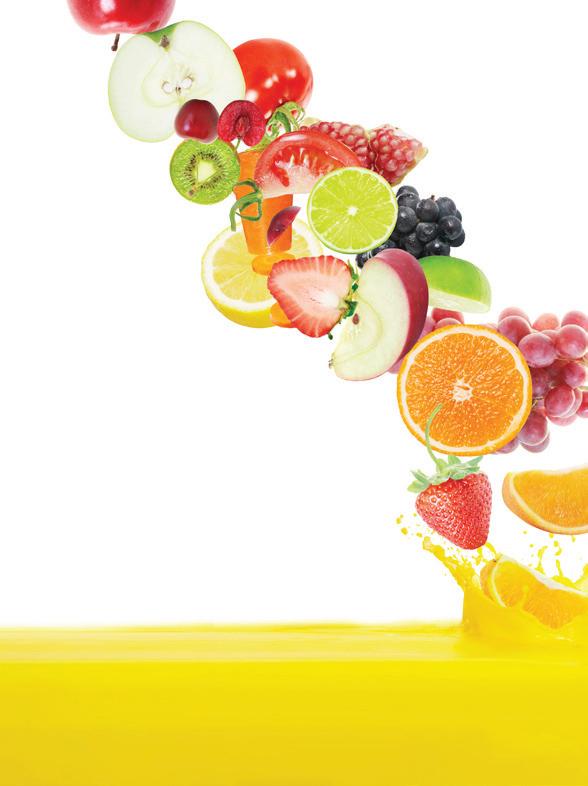
How did “going kosher” make a difference in your business?
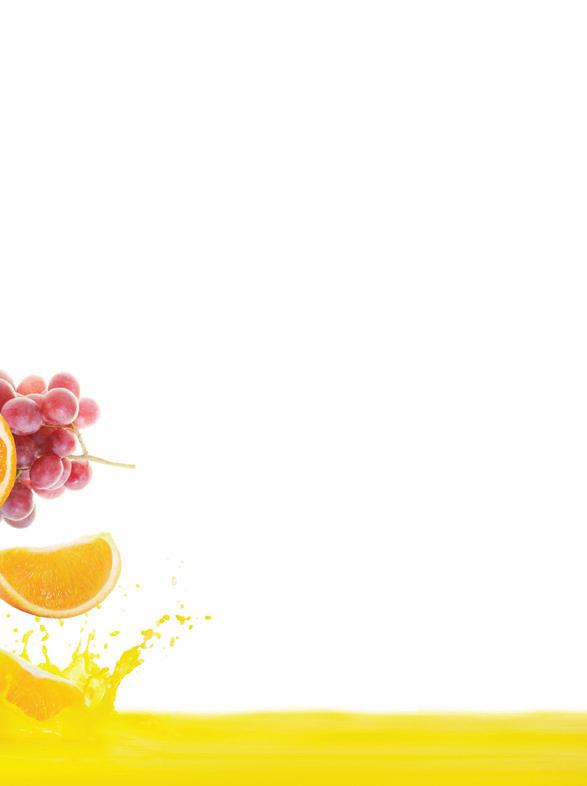
We know many of our consumers require kosher products for a variety of reasons, so our products are certified kosher in order to reassure those consumers that our products are safe for them as part of a kosher diet. Kosher certification also provides our consumers with a higher level of trust in our brands and an appreciation for the care we put into the products that bear the Tropicana and Naked Juice brand names, amongst others certified by ~ Kosher and bearing its symbol.
What would you say to a company considering obtaining kosher certification?
I would advise anyone thinking about kosher certification to do their homework. I’ve learned there are differences in the certifying agencies and they need to select one that reflects the image of their brand. Tropicana and Naked Juice are both highly respected brands and the ~ speaks to that with the respect it carries in the kosher community. Also I would advise them to take advantage of the resources the ~ has and their willingness to assist the brands they certify.
“Carol is a true partner in ensuring ~ Kosher standards are adhered to in all that we certify for the PepsiCo company. She has developed an extensive knowledge in kosher requirements, and with guidance from ~ Kosher has given several presentations on kosher to her colleagues. She is capable of fielding the many questions about kosher regulation that come to her on a regular basis. For our team at ~ Kosher, it is always a pleasure working Carol. She is always very responsive and makes sure that any matters which come up are resolved quickly. One of her strongest attributes is that she does not shy away from asking questions, and is always on top of the best way to handle any situation. We would like to take this opportunity to wish her and PepsiCo further success in their work, which is greatly appreciated by both the ~ and the kosher consumer.”
What is the biggest challenge in maintaining kosher?
The hardest thing for me is keeping up with the fast pace. While some of our products are household staples, we also stay on top of new innovation and consumer trends. As our portfolio evolves and grows, I need to stay on top of submitting new ingredients and products to the ~ for kosher approval. Mindy Goodman, our Account Rep, makes sure the submission of our new requests to ~ Kosher are completed in an efficient and timely manner. My relationship with her is always a very helpful and friendly one.
Back when I first starting doing kosher for Tropicana and Naked Juice, I wish I knew what a great partnership was in store for me. I was worried about making mistakes through my own lack of understanding what kosher really was and what it meant to the people who keep kosher. I didn’t fully understand the resources the ~ had available for me and their willingness to help me work through what I didn’t understand no matter how large or trivial it was.
“Carol is a pleasure to work with. She is thorough in her review and submission of each ingredient and product, and has encouraged her staff to do the same. Whether she has a question regarding a kosher certificate, equipment, or kosher in general, she will ask questions to ensure complete clarity. Likewise, when we have a question regarding submissions or products at any facility, she is quick to respond with a clear answer.” ~
A donut is a donut. Some are better than others, but they’re pretty much all awesome. So, when my son came home from yeshiva raving about the donuts the cook made, I paid attention. This guy is not a foodie. He can take or leave almost anything. If he says the donuts are the best, they have to be more than just good. He went back to yeshiva the next day with instructions to try and get the recipe from the cook. And Chef Naftali was gracious enough to share it with all of us here at Between Carpools and the recipe passed our taste test with flying colors! Thank you Chef Naftali!
2 ¼ teaspoon dry yeast
1 ½ cup warm water
4 tablespoons sugar

6 cups flour
2 egg yolks
2 tablespoons vanilla sugar
1 (4 ounce) stick margarine
¼ teaspoon salt
Oil, for frying
1. Place dry yeast into a large bowl or mixer bowl. Add warm water and some of the sugar. Let bubble. Add remaining ingredients. Mix until very well combined.
2. Using a sharp knife, cut the dough into uniform balls. Weigh the pieces on a digital scale so you know they’re exactly the same size (30 grams is a good size for minis; 60 grams for regular). It helps to spray your hands with nonstick cooking spray or wear gloves. Place each doughnut ball onto its own square of parchment paper (do not use wax paper!). Cover loosely and let rise for 1 ½ hours.
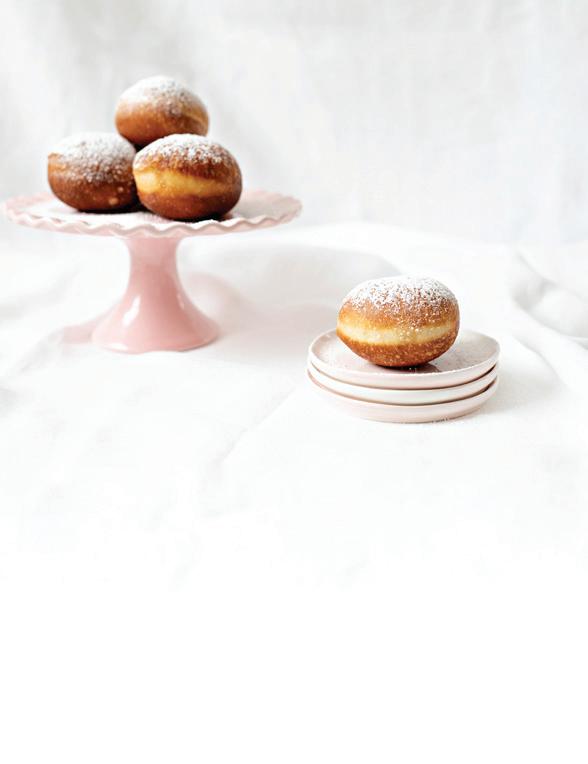
3. Deep fry donuts for 3-4 minutes, flipping halfway through. Drain on paper towels and dust with confectioners’ sugar (or fill them as you like!)

About Us:
Between Carpools is the lifestyle app/site for the busy Jewish woman. You’ll find home and organizing tips, parenting insights, activities, how-to’s and DIYs, and of course, entertaining ideas, recipes, and inspiring reads. The APP is available at the App Store and Google Play. If you have a kosher smartphone, you can visit your local TAG office to have the app downloaded. Enjoy! Victoria Dwek, Leah Schapira, Renee Muller, Shaindy Menzer, & Esti Waldman www.betweencarpools.com
It may be true. We found the best ones.
1. How do I kasher the stovetop?
2. Do I need to designate the grates for dairy and meat?
3. Can I have a pot of dairy and a pot of meat cooking at the same time?
4. How can I kasher for Pesach? (Pesach will be discussed in a future issue.)
The 4 common stovetop types in home kitchens are: gas, electric, glass top and induction. Each type has its own considerations; however, before we begin we need to understand a basic concept in Halacha. In order for taste to transfer it needs a medium, either the food itself can touch a surface (pot) or 2 pots are next to each other and there is a liquid in between that can cause the taste to transfer.1 Therefore, if one has a covered pot of milk on one burner and a covered pot of meatballs on the burner next to it, and they are touching each other, but there is no liquid medium, then everything is kosher (assuming there is no splattering). Now let’s go to our discussion. In all of these examples, one is required to make sure the area is clean (no food residue). We are also assuming that all food is in pots and not directly on the cooktop.
1. If one has grates from a gas stovetop that came from a non-kosher environment then one should kasher l’chumra. 2 The easiest way is to put the grates in a self-cleaning oven and run the self-clean cycle. If one does not have a self-cleaning oven, then one can cover the stovetop with a blech or aluminum foil and turn on the burners to “high” for 15 minutes; this will create enough heat for kashering. Be careful not to have all 4 burners on at once when using aluminum foil as it can cause excessive damage, including breaking the oven. The flat part in between the grates should be kashered by pouring boiling water over it.

2. One is not required to designate separate grates for dairy and meat.3 There are some who are more stringent and require designated grates.4
3. One may have pots of dairy and meat cooking at the same time provided that there is no splattering or mixing (including steam) from one to the other. Since it is difficult to meet the required conditions, it is not advisable to cook meat and dairy at the same time.
1. The electric coils get red-hot and are self-kashering each time they are turned on. The flat part in between the grates should be kashered by pouring boiling water over it.
2. There is no need to designate separate dairy and meat burners since the coils are self-kashering each time they are turned on.
3. As with a gas stovetop, one may have pots of dairy and meat cooking at the same time provided that there is no splattering or mixing (including steam) from one to the other. Since it is difficult to meet the required conditions, it is not advisable to cook meat and dairy at the same time.
1. The area directly over the burner (within the circle of heat) does not require any kashering. However, many times the pot is larger than the circle and if something spills then it would transfer taste and, therefore, requires kashering. One should turn on all of the elements to the highest heat and heat up a pot of water. The boiling water should be poured over the heat elements so that it spills onto the rest of the glass top, which effectively makes a hagalah with even meluban (hot stone).
2. As mentioned, many times the pot is larger than the circle of fire and there can be spillage, therefore one should designate separate burners for dairy or meat to avoid complications.
3. One may have pots of dairy and meat cooking at the same time provided that there is no splattering or mixing (including steam) from one to the other.
Since it is difficult to meet the required conditions, it is not advisable to cook meat and dairy at the same time.
1. If one has an induction cooktop that was previously used for non-kosher, one can either kasher with boiling water or one can buy an induction interface disc. This disc would serve as a barrier between the nonkosher surface and your pot.
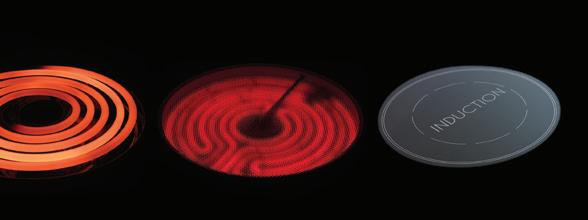
2. One of the features of induction cooking is that the element stays cool to the touch, so unlike the other cooktops this one would not kasher itself. Therefore, one should designate separate burners for dairy or meat; alternatively, one can purchase two sets of induction interface discs – one set for meat and one set for dairy.
3. One may have pots of dairy and meat cooking at the same time provided that there is no splattering or mixing (including steam) from one to the other. Since it is difficult to meet the required conditions, it is not advisable to cook meat and dairy at the same time. ~
In the last installment, we discussed the prohibition of Yayin Nesech (wine touched by an idolater). Cooked, or mevushal, wine is not subject to the prohibition of Yayin Nesech, but there are various opinions as to what temperature halachically constitutes “cooking”. The main opinions and their sources will be presented in this installment.
The Gemara (Masechta Avodah Zara 30a), commenting on the Mishna 29b’s statement that wine of a non-Jew is prohibited, says: Shmuel and Avleit (Rashi: He was an idol worshipper.) were sitting together and they were served cooked wine. Avleit (concerned that he should not make the wine nonkosher) removed
his hands (from the space near the wine). Shmuel then said to him (that it was not necessary for him to refrain from touching the wine since) the Rabbis taught that cooked wine is not subject to the prohibition of Yayin Nesech.
The Ran’s1 commentary on the Rif2 quotes the Raavad in the name of Rav Hai Gaon3 that as soon as the wine boils it is considered cooked. He then quotes the Ramban4 that the wine is considered cooked when some wine (evaporates and) begins missing some of its quantity. The Ran (as well as the Rashba5) concludes that maybe there is no argument, as both criteria are the same, for when it boils, it also evaporates . The Rosh6 only brings the first opinion (as he probably did not see the second opinion) and he compares it to the laws of cook -
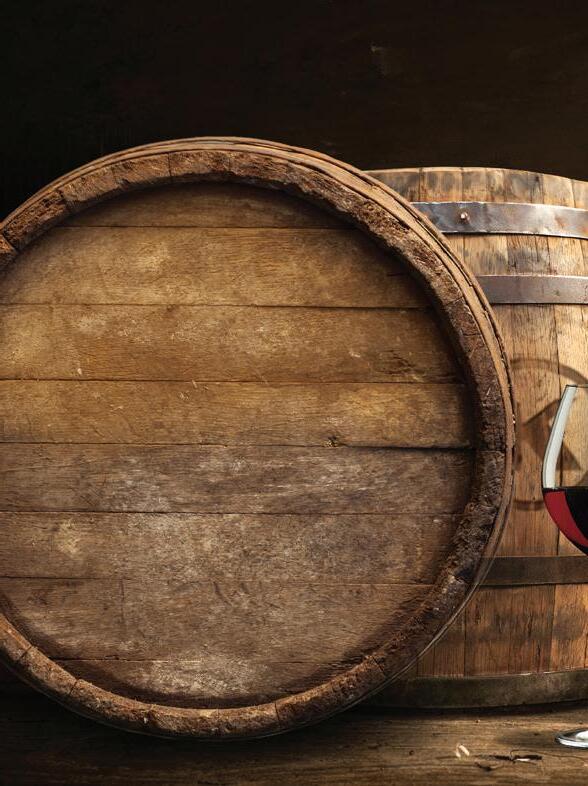
ing on Shabbos where the criteria is “Yad Soledes Bo”, (a hand will be scalded [removed instinctively] in this water temperature). There are various opinions on the appropriate temperature for this criteria, ranging from 112-160°F.
(The Rosh then goes into a discussion as to whether the reason for this prohibition is to discourage social drinking and possible relationships between Jews and non-Jews, or if it is based on the laws of sacrifice in the Temple and the prohibitions of idol worship. There is also a lengthy discussion by many commentaries on this issue, as well as understanding why cooked wine is permitted. Some say because it degrades the wine, some say because it is unusual to cook it, and some say because the original source of the prohibition was only on uncooked wine. This article will not be able to clarify these questions, I am merely bringing them up to whet your appetite to continue researching, and gain insight into some of the later mentioned opinions.)
The opinions mentioned above are the basis of the Bais Yosef’s7 decision in the Shulchan Oruch8: When is it considered cooked wine? When it boils on the fire. The Shach9, in Sifsei Cohen, his commentary on the Shulchan Oruch, then comments: When it lessens its quantity (evaporates), and he quotes this from the Rashba and the Ran.
In today’s wine making industry the wine, or more precisely the grape juice, is pasteurized shortly after it is squeezed and fermentation is caused by the introduction of commercial yeast. Pasteurization at this stage helps ensure that each bottle of wine in the production will taste the same, giving a consistent experience to consumers.
In order for the grapes achieve optimum quality each year, specific levels of moisture, sunlight and temperature are required. If these are higher or lower than the ideal, the fruit will not reach optimum quality. Consequently, the quality of the wine suffers, as the acidity level or sweetness level (brix percentage) of the grapes was not optimal.
Hashem, in His unlimited kindness and wisdom, created grapes with the quality of carrying its own (ambient) yeast. This is sometimes called the grapes’ bloom, or blush. This yeast is what causes the grape juice to ferment (and bubble), turning its sugar (sweetness) into alcohol. This should not be confused with the sweetness imparted in some wines. That sweet taste is what remains when the fermentation process is stopped before all of the sugar is converted into alcohol.
In the mid-19th century, a famous scientist, Mr. Louis Pasteur discovered that there were many living organism that could spoil or ferment the wine. In 1856, Pasteur was called to investigate why the wine of a local vintner was spoiling. He came up with the discovery that bacteria is a living organism and, therefore, if one would cook the grape juice to 60 - 100°C (140 - 212°F), it would kill all of the bacteria. Afterwards, if the vintner wanted to ferment the wine, he would have to introduce new, cultured yeast in order to turn the juice into wine.
This idea of killing the bacteria (and introducing yeast) is widespread in the wine and dairy industries, as well as the production of other fermented products. It is also the foundation of food safety practiced in most companies today to help control the spread of unwanted bacteria and contribute greatly to the shelf life of products.
The standard procedure in the wine industry today is to pasteurize all of the grape juice to 165°F and then add yeast, ensuring that only healthy bacteria grows and that all of the wine has a uniform taste. (Even after heating it to 165°F some of the bacteria can possi-

mevushal
“when is it considered cookedwine?”
bly reawaken during fermentation; therefore, some scientists recommend heating it to 212°F.) Some smaller vintners do not pasteurize their juice and choose to monitor it carefully and add or change chemical additives as needed.
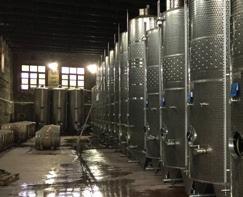
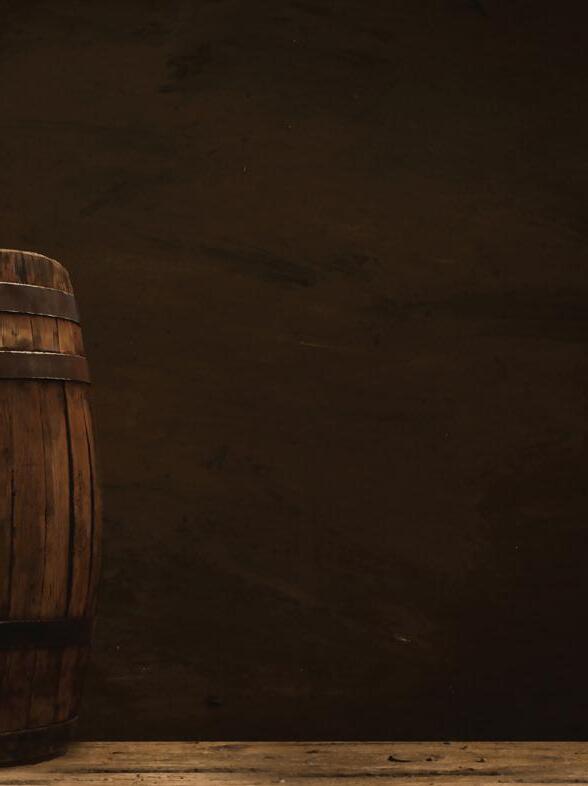
Reb Moshe Feinstein concluded10 that grape juice cooked to 165°F is considered cooked wine. He explains that Rav Hai Gaon’s opinion that as soon as it is boiled it is considered cooking is similar to the laws of Shabbos where it is considered cooking at the temperature of Yad Soledes Bo. He further says that evaporating also starts at that time. Later on, in his fourth sefer on Even HaEzer, Reb Moshe adds a few words towards the end of siman 108 saying the juice must reach 175°F to be considered mevushal, but he does not explain why he changed the requirement from 165°F to 175°F.
The exact temperature that wine boils depends on the altitude, as well as the percent of alcohol in the wine. As noted, wine boils at a lower temperature than water and, therefore, a mixture with 12% alcohol would boil later than wine with 16% alcohol. Those who accept a lower temperature for mevushal would probably point to distilling where cooking starts at a lower temperature. It is well known that the Tzelemer Rov, OB”M, (who used to certify Kedem and Royal wines) opined that wine must be heated to 190°F in order to be considered mevushal. This policy has been adopted by Kedem and many other wineries. The ~ requires a minimum temperature of 86°C (186.8°F).
The relatively recent innovations of ultra- and flashpasteurization, where the juice is pasteurized at different heat levels for a few seconds and immediately cooled, helps minimize the degradation caused by pasteurization. Since pasteurization is done in a closed, pressurized system, no vapor can leak into the atmosphere and
evaporate. The halachic question is whether this affects the Ramban’s opinion that the liquid must lessen in quantity to be considered cooked.
The widespread use of ultra- and flash-pasteurization in closed loop pressurized systems throughout the wine industry has introduced a new set of questions as to whether the original intention of cooking the wine, outlined in the Gemara, has been preserved.
Rav Elyashiv, OB”M, questioned whether cooking wine is considered “an uncommon occurrence”, since one of the opinions permitting cooked wine was based on the fact that most wine at the time was uncooked. Since pasteurization is now the norm in the grape juice and wine industry, Rav Elyashiv questioned whether cooking could still be considered a heter to avoid Yayin Nesech. Rav Shlomo Zalman Auerbach, OB”M, questioned 11 whether the taste is changed during the cooking process. The heter for cooked wine, according to some opinions, is due to the inferior quality of the wine once it was cooked. Today, when the cooking does not noticeably degrade the wine, and some of the highest rated kosher wines are mevushal, the heter might not apply.
Rav Ben Tzion Abba Shaul argues12 that the wine must evaporate in order to be considered mevushal. The lack of evaporation in a closed loop system could invalidate the heter.
Those that permit closed loop pasteurization would argue that when the pasteurization loop is sealed, it merely forces the evaporated gases to revert to liquid. The liquid really is cooked to the level of evaporation, yet the plumbing system and technology forces the evaporation to reincorporate into the mixture and revert to a liquid state. The ~ does not allow a fully closed system; there must be a way for some steam to escape. As for the lack of degradation and current commonality of pasteurization, the original takana was made only to prohibit uncooked wine. It never stipulated that the decree would need to be altered if time and circumstances changed and cooking became common.
Due to the serious prohibition of Yayin Nesech it is clearly easier to use cooked wine, since the wine might be handled by non-Shomer Shabbos Jews and even by, l’havdil, nonJews; however it is considered more mehudar by some to use uncooked wine for Kiddush and especially for the Pesach Seder.
Some bottles of kosher wine bear the designation “mefustar” (pasteurized). Those who follow the p’sak of Rav Elyashiv, Rav Auerbach or Rav Abba Shaul may not consider those wines to be mevushal according to halacha; however, Rav Ovadia Yosef, OB”M, argued13 that pasteurized wine is also considered mevushal.
Due to the serious prohibition of Yayin Nesech it is clearly easier to use cooked wine, since the wine might be handled by non-Shomer Shabbos Jews and even by, l’havdil, non-Jews; however it is considered more mehudar by some to use uncooked wine for Kiddush and especially for the Pesach Seder.
Our prophets tell us that wine is M’Sameach Elokim v’Anashim (it has the ability to bring much happiness to the Almighty as well as to people) if used properly. May we merit to experience much happiness and joy in our personal and family lives, as well as in our spiritual lives!
I hope this helped uncork some of the confusing opinions on kosher wine processing. This article is meant for educational purposes. As in all matters of Halacha, please consult with your local Orthodox rabbi to determine which opinions to follow.
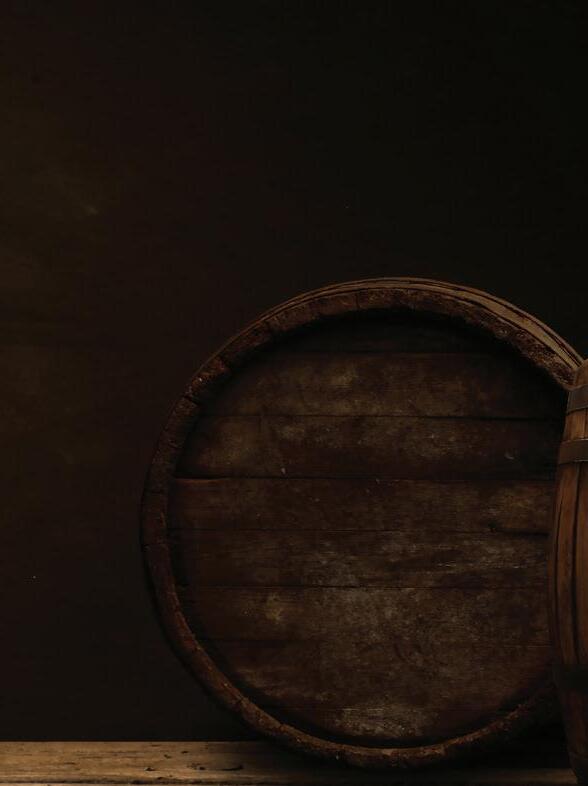
Please send any questions or comments to editor@kosherspirit.com.
In my previous article, I explained that crushed grapes can be purchased from a non-Jew if the grapes and the wine have not been separated. Once the juice begins flowing, the juice can become Yayin Nesech and must be handled by a Shomer Shabbos Jew.
I was asked by some of the readers to clarify this further.
When we buy grapes in a retail store, we usually check first to make sure that the grapes are not crushed. If we are buying a case of grapes, they usually come in a wooden crate which protects the grapes from becoming crushed. Even if the grapes were crushed, it would still not pose a Halachic difficulty, as the liquid would drain out from the holes of the crate. There would not be any leftover juice.
When a large wine producer purchases grapes, they are usually delivered in totes or trucks. A tote is usually a 6’x6’x6’ plastic container, which does not have drainage holes, allowing the leaking juice to be used by the producer. Since all of the grapes are packed together in one container, and weigh about a half ton, the weight crushes the grapes and forces some of the liquid to come out. Of course, the same is true with a truckload of grapes.
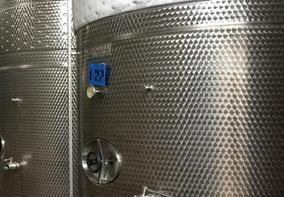
Halachically, as long as the juice is mixed with the grapes and not separated at all, it is not considered wine. This is why the Mishna (Avodah Zara, Daf 55a) says that we are permitted to buy crushed grapes from a non-Jew.
As soon as the juice separates from the grapes it must be handled exclusively by a Shomer Shabbos Jew. The Gemara’s example is “piling it on a mound”. If all of the grapes (all of the solids) are piled high on the mound, leaving the liquid to flow nearby (even before it was sifted), this liquid is treated as wine.
Therefore, if the tote or truck is delivered by a non-Jew, it would be permissible (provided that it is handled properly in the field, as we will explain) since the grapes and juice have not separated. When the totes or truck are tipped in order to empty the grapes and juice into the processing machines, one may encounter a problem. When the tote or truck is tipped, naturally, the solids will pour out first. At the very end, there will be a few seconds where the container will only have the remnants of the liquid. At this second, the liquid can become Stam Yaynom, or non-kosher. Later, when this juice is poured on the grapes, the whole pile will become non-kosher. Therefore, only a Shomer Shabbos Jew should work the controls to tip the containers.
In addition, the mashgiach should make sure that the workers do not pour from one tote/truck to another at the field, as this can cause the same halachic problem. Lastly, the mashgiach must make sure that any grapes that are crushed and tested in the field are disposed of, as the juice is halachically considered wine. This can potentially cause all of the grapes to become non-kosher. ~
1 Rabbeinu Nissim (1320-1380) of Gerona, Spain.
2 Rabbi Yitzchok Alfasi (1013-1103). Lived in Algeria, Fez, and then Spain.
3 Headed the great Talmudic academy of Pumpedesia (now part of Baghdad, Iraq. Lived 939-1038.
4 The Nachmanides, Rabbi Moshe Ben Nachman (1194-1270) of Gerona, Spain.
5 Rabbi Shlomo ben Aderes (1235-1310) of Barcelona, Spain.
6 Rabbeinu Asher (1250-1327) of Cologne, Rome and then Toledo, Spain.
7 Rabbi Yosef Caro (1488-1575), author of the Shulchan Oruch, who lived in Spain, Portugal and Tzfas, Israel.
8 Yoreh Deah, Siman 123, S’if 3.
9 Reb Shabsi Cohen (1621-1662) of Lithuania, and then Moravia.
10 Igros Moshe, Yoreh Deah, volume 3, siman 31.
11 Minchas Shlomo, volume 1, number 25.
12 Ohr L’Tzion
13 Yabia Omer, Yoreh Deah vol. 8/15.
Chocolate chips are small chunks of sweetened chocolate, used for cooking, baking or enjoyed as a snack.

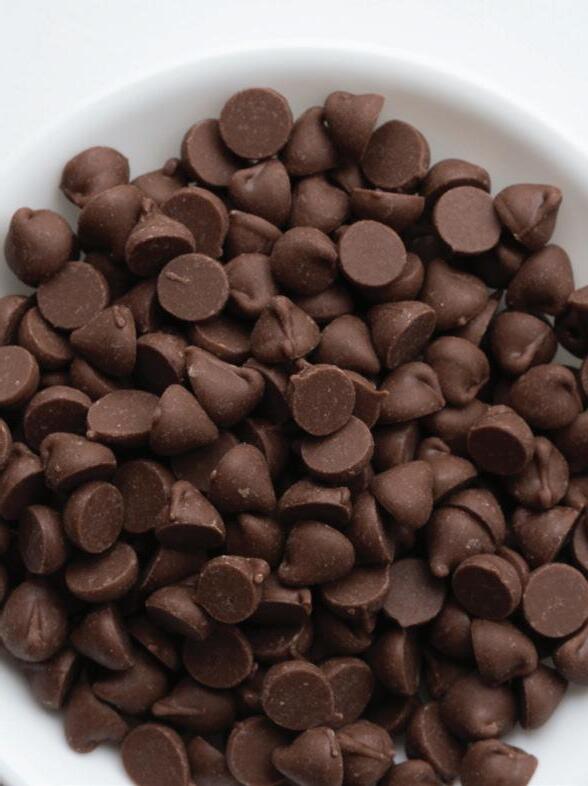
The process begins with the farmers hand-harvesting the cocoa pods from the trees, opening the pods and then removing the beans. The beans are then packed into boxes or piled and covered with banana leaves for few days, during which time they ferment and turn brown. The beans are then sun-dried and shipped to the processing plants.
The cocoa beans are roasted and hulled (at this point they are called cocoa nibs), and crushed into cocoa mass/liquor. The mass can then be refined by being crushed again and used in chocolate processing.
The cocoa mass can also be pressed to separate the liquid (cocoa butter) from the cake. The butter is deodorized to reduce acidity and to remove impurities that affect the flavors used in the chocolate processing. The cake is ground to make cocoa powder.
The cocoa is then blended to make the final product. The main ingredients are cocoa liquor, cocoa butter, cocoa powder, sugar, lecithin and vanilla. When milk chocolate is made, milk or milk powder is added. White chocolate is made with milk and does not include cocoa powder. Vegetable fats are used to replace or reduce the use of the expensive cocoa butter in compound chocolate - a lower quality chocolate.
After blending, the mixture is refined by crushing it between a series of rollers under controlled temperature and mixed in the conche tanks. The product is then cooled in the tempering unit and deposited on a belt and cooled in a cooling tunnel. The final product is then packaged for consumers to enjoy.
In order for the chocolate chips to be kosher certified, all the ingredients need to come from kosher sources. Cocoa ingredients are often shipped from one facility to another in tankers that can be used for dairy or non-kosher. The tankers need to be kosher certified or kosherized to retain the kosher status of the finished product. Additionally, the production process is hot, so it is very important to make sure that the equipment is kosher without any non-kosher ingredients that can compromise the kosher status of the chocolate. When it comes to pareve chocolate chips, the equipment needs to be dedicated to pareve or completely cleaned from any dairy residue and kosherized properly. This is often a challenge in chocolate manufacturing environments that try to avoid any water on the equipment due to concerns of potential bacteria growth and damage to the chocolate if it comes in contact with water. Therefore, chocolate chips, and any product containing chocolate chips, should only be purchased with a reliable kosher certification. ~
This article will examine the Halachic prohibition against making or eating dairy bread. We will address this issue in detail, providing the criteria for when the prohibition does and doesn’t apply. We will discuss some of the common dairy breads in use today and when and why they would be permissible.
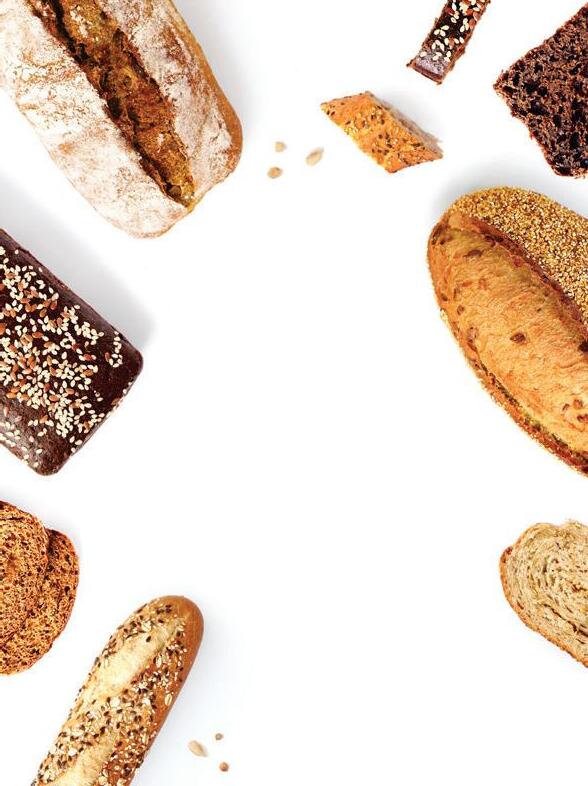
The Gemara (Pesachim 36a) records the following Baraisa: “One may not knead dough with milk, and if he did, the bread is forbidden to be eaten to prevent sin.” The concern is that the bread might be eaten together with meat.
The Gemara goes on to quote Ravina who offers the following exception to this prohibition: “If it is baked “k’ein turah” it is permissible.”
What is the meaning of the phrase “k’ein turah” ? The Rishonim offer two differing explanations. Rashi translates it to mean “like the eye of an ox”, which is an example of something that is small. He explains that one may bake a small amount of dairy bread because it will be consumed
right away and it does not remain in the house long enough for one to forget that it was kneaded with milk. In contrast, the Rif (Chullin 38a) and the Rambam (Hilchot Maachalot Asurot 9:22) translate the phrase “k’ein turah” to mean “similar to an ox.” This means that one shapes the bread in an unusual form, such as like an ox, to indicate that the bread is not pareve.
The Shulchan Oruch (Yoreh Deah 97:1) rules leniently in accordance with both interpretations. Therefore, one may bake dairy bread if either condition is met – it must either be small or unusually shaped.
“One may not knead dough with milk, lest one come to eat it with
It is evident that the Mechaber and the Rema disagree as to the definition of “small amount”. The Mechaber defines it as the amount eaten in one sitting. It follows that anything more
would be prohibited. The Rema, however, considers what is prepared for Shabbos or Shavuos to be a “small amount”. His definition of small is an amount that would be eaten within
There is a disagreement among the poskim as to how unusual the shape must be in order to permit the dairy bread.

Some say the point of the change is just to remind the person who bought or baked the bread that it is dairy. Therefore, even a slight change that would serve to jolt his memory is sufficient.
Others, however, argue that the shape must be so unusual that anyone coming across the bread would wonder about its uniqueness, caus-
ing them to inquire about it and ultimately find out that it is dairy.
The consensus among the contemporary Poskim is to follow the second, more stringent opinion.
meat. If one did knead it that way, the whole loaf is prohibited, even to eat alone. If it was a small quantity that can be eaten in one sitting, or its shape is unusual so it will be recognizable that it shouldn’t be eaten with meat, it is permitted. One may not bake bread in an oven that was smeared with fat, and if one did, the rules are as for a dough kneaded with milk.
Rema: Thus we are accustomed to knead bread with milk for Shavuot, and also fat for the honor of the Sabbath, because all of this is considered a small amount. Also, its shape is distinct from other bread.”
one day (24 hours). Anything less is permitted.
There is an argument among the poskim about whether making a change after the bread was baked is sufficient to make the bread permissible.
R’ Yonoson Eibshitz in Kreiti Upleiti maintains that it is. Accordingly, if one baked regular dairy bread in a large enough quantity to be prohibited, it can be broken up into small pieces or have its shape changed and it would become permitted.
The Chavos Da’as, however, maintains that it would still be prohibited. Once the bread was baked in a manner that would be forbidden, it can never be made permissible.
The Pischei Teshuva and Pri Megadim side with the Chavos Da’as.
Any pastry or Danish that is filled with cheese is permissible, because the cheese is distinct, so there is no concern one would mistakenly eat it with meat. The
prohibition is only when the milk is kneaded into the dough itself.
If a pastry or Danish is made with milk or butter in such a way that it’s impossible to know that it is dairy by looking at it, its status would depend on whether it is usual to eat that pastry together with meat.
The Pischei Teshuva quotes the Maharit as saying that baked goods that are sweet and not typically eaten with meat are allowed to be made
There have been poskim in the past that felt that proper signage or labeling was enough to permit dairy bread. Their reasoning was simple: since the packaging clearly states the product is dairy, there is no concern of it being eaten with meat.
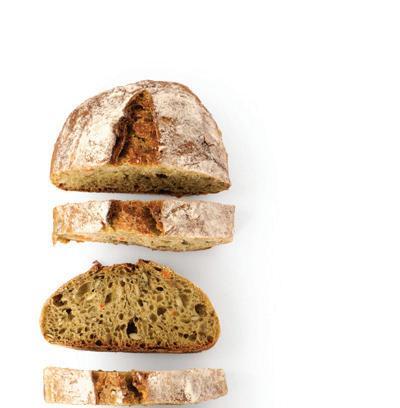
However, it is the consensus of today’s poskim 1, that labeling and signage are not sufficient indicators. The bread can only be permitted if there is something unique and different in the shape of the bread itself as mentioned above. ~
with milk. Accordingly, most pastries or Danishes are permitted, even when made with milk or butter. Only those that would typically be eaten together with meat are prohibited.
The Sheilas Ya’avetz does bring an opinion that forbids even these pastries, however the consensus amongst today’s major kashrus agencies is to accept the lenient opinion of the Maharit.
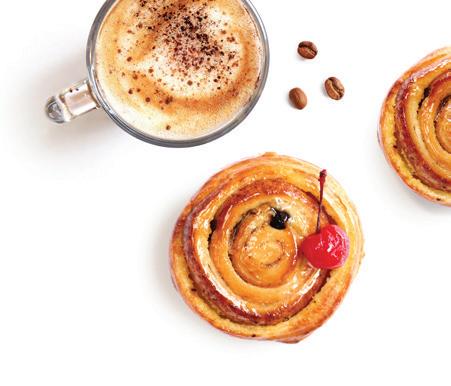
88 ACRES INC.
MASSACHUSETTS
Granola Bars & Seed
Butters
ABAITA RESTAURANT NEW YORK
Restaurant
ACADIAN CROSSING CONSUMER PRODUCTS LLC
USA
Plastic Containers
ALCASS SPA
ITALY
Vegetarian Burgers
ALMENDRAS
BOLITAL S.R.L.
BOLIVIA
Shelled Brazil Nuts
AMTECH BIOTECH CO., LTD.
CHINA
Food Additives
ANAFA CHEMICAL LTD.
ISRAEL
Tartaric Acid
ANHUI SHENGDA
FOODS CO. LTD.
CHINA
Canned & Frozen Fruits & Vegetables
ANTHEM BIOSCIENCES PVT.
LTD. (UNIT IV)
INDIA
Nutraceuticals
BASF CHEMICALS COMPANY LTD.
CHINA
Chemicals
BBU (BIMBO BAKERIES USA)
USA
Baked Goods
BERGLANDMILCH
EGEN
AUSTRIA
Whey
BEST MARKET WAREHOUSE
NEW YORK
Dried Fruits & Nuts
BESTA CO. LTD.
SOUTH KOREA
Aluminum Foil
BEYOND MEAT
CALIFORNIA
Plant Based “Meat”
Products
BIG EASY BUCHA
LOUISIANA
Kombucha
BIO’C JAPAN
Koji
BLISS LIFE SCIENCES LLP
INDIA
Health Supplements
BLOK
CHOCOLATIER
NEW YORK
Chocolates
BROOKLYN ARTISAN
BAKEHOUSE NEW YORK
Restaurant
BROOKLYN BATTER
NEW YORK
Baked Goods
BRUHWERCOFFEE
CIA LTDA
ECUADOR
Coffee Products
BUNGE MILLING
CALIFORNIA
Rice Balls
CALZA CLEMENTE SRL
ITALY
Enzymes
CANAAN CATERING
CALIFORNIA
Caterer
CERVECERIA
YUCATECA, S. DE
R.L. DE C.V. - GRUPO
MODELO AB INBEV
MEXICO Beer
CEVES BEVERAGES
LLC
GEORGIA
Coconut Water
CHACHA THAI
THAILAND
Rice & Grains
CHARCOAL TASTE OF JERUSALEM
CALIFORNIA
Restaurant
CHEMISCHE
FABRIK DR.
WEIGERT GMBH & CO. KG
GERMANY
Washing Materials
CHEMSYNERGY
GMBH
GERMANY
Fatty Alcohol
CLEANTANK SERVICES
MEXICO
Truck Wash
COFFEE BLENDERS
CALIFORNIA
Coffee Products
COMPAGNIE DES FROMAGES ET RICHESMONTS
FRANCE
Liquid Permeate
COMPANHIA
CACIQUE DE CAFÉ
SOLUVEL
BRAZIL
Coffee Products
CORTELYOU SNACKS
NEW YORK
Baked Goods
COSTCO CANADA
CANADA
Baked Goods
CROSSROADS
BLENDS
NEW JERSEY
Spices & Seasoning
Blends
CURA GLOBAL

HEALTH INC.
USA
Pharmaceutical Products
D.R. UNIQUE TRADE & INVESTMENT LTD.
ISRAEL
Tartaric Acid
DAVID WEBER LTD.
ISRAEL
Corn on the Cob
DE BEVERAGES LLC
USA
Energy Drink
DELICE BAKERY
CALIFORNIA
Restaurant
DOLE FRESH
VEGETABLES, INC.
USA
Insect Free Produce
DONA CHAI
NEW YORK
Tea Concentrate
DONG-BANG FOOD
OIL CO., LTD
SOUTH KOREA
Perilla & Sesame Oils
DREAM EVENTS & CATERING BY
SICILIA
CALIFORNIA
Caterer
DURAFORM LANE, LLC
WISCONSIN
Probiotics
EURIAL ULTRA
FRAIS
FRANCE
Dairy Products
F. PACHE
INDUSTRIAL Y COMERCIAL SA
URUGUAY
Cocoa Products
FAL COFFEE
ROASTERS
NEW YORK
Ground Coffee
FALAFEL KING
NEW YORK
Restaurant
FALAFEL TANAMI
NEW YORK
Restaurant
FIRST START
HOLDINGS, INC.
CALIFORNIA
Fruit Snacks
FLAVORFULFIT
NEW YORK
Meal Replacement Bars
FPL FOODS LLC
GEORGIA
Meat Substitutues
FRUITS BY PESHA
NEW YORK
Fruit Platters
FUJIAN YUXING
FRUIT & VEGETABLES
FOODSTUFF
DEVELOP. CO. LTD.
CHINA
Canned Vegetables
FUZHIYUAN
FEEDSTUFF
PROTEIN
DEVELOPMENT CO.
LTD.
CHINA
Oils & Fatty Acids
GANESHA
ENTERPRISES
NEVADA
Cardamom Products
GLASSVEN
YANGZHONG
SILICAS AND CHEMICALS JV
LTD.
CHINA
Chemicals
GLEN SUMMIT
SPRINGS WATER CO
PENNSYLVANIA
Spring Water
GROWERS
EXPRESS, LLC
CALIFORNIA
Vegetables
GRUPO
INDUSTRIAL VIDA
MEXICO
Dried Fruit
GUANGDONG
ZHAOQING
XIANGMANYUAN
FOODS CO., LTD.
CHINA
Soy Sauce
GUANGZHOU
HUAFENG
ALUMINUM FOIL
TECHNOLOGIES CO
LTD.
CHINA
Aluminum Foil & Containers
HANDARY SA
BELGIUM
Preservatives
HANGZHOU
GUANGLIAN COMPLEX PAPER CO. LTD.
CHINA
Baking & Parchment Paper
HAWAI’I HARVEST HONEY LLC
HAWAII
Honey
HERMES INTERNATIONAL
D.O.O
CROATIA Fig Spread
HISHIROKU CO.
JAPAN
Koji Products
HOLLAND INGREDIENTS B.V.
NETHERLANDS
Natural Food Coloring
HOSTESS BRANDS
USA
Baked Goods
IKO IMPORTS LLC
USA
Non-Stick Pans
INTERMED ESTERS
SDN BHD
MALAYSIA
Esters
ISAURA BAKERY
NEW JERSEY
Gluten Free Baked Goods
ISHAAN BIO
PRIVATE LIMITED
INDIA
Enzymes, Proteins & Starches
IT’S GOOD
ORGANICS
NEW YORK
Dried Fruits & Nuts
ITTELLA ITALY SRL
ITALY
Frozen Vegetables
J. RETTENMAIER & SOHNE GMBH + CO KG
GERMANY
Cellulose & Fiber Products
JIEYANG CITY
TIANLE FOOD INDUSTRIAL CO.
LTD.
CHINA
Canned Vegetables
JINQIAO WILMAR
CHLOR-ALKALI (LIANYUNGANG) CO., LTD.
CHINA
Chemicals
JULIAN’S RECIPE
NEW YORK
Potato Crisps
JUS BY JULIE
NEW YORK
Kale Chips
K SALT INC.
SOUTH KOREA
Salt Products
KING’S FOODS
SHUYANG LTD.
CHINA
Garlic Products
KLK KOLB
SPECIALTIES B.V.
NETHERLANDS
Defoamer
KOREA BAMBOO
SALT CORP.
SOUTH KOREA
Bamboo Salt Products
KOREA NATURAL FOOD CO. LTD.
SOUTH KOREA
Liquid Teas & Lemon Juice
KOSHER STAM
CALIFORNIA
Romaine Lettuce
LADGROUP LIMITED
NIGERIA
Shea Nut Products
LATICINIOS BELA
VISTA LTDA.
BRAZIL
Milk Powder
LAVIE WINERY LTD.
ISRAEL Liquors
LECITAL LLC
RUSSIA
Lecithin
LIBERTY OILS
MILLS LTD.
INDIA
Refined Oils
LINYI ZHIXIN FOOD
CO. LTD.
CHINA
IQF Vegetables
LOS ANGELES
SPECIALTY FOOD
INC.
CALIFORNIA
Baked Goods
LUIGI ZAINI S.P.A.
ITALY
Chocolates
MANNA FOOD
SERVICES
CALIFORNIA
Restaurant
MANUFRI, S.L.
SPAIN
Fruit Compound
MAX WORLD
TRADING
MEXICO
Tequila
MENSCH BAKERY
CALIFORNIA
Restaurant
MERINGUESHOP
USA
Baked Goods
MERKAZ HASTAM
ISRAEL
STaM
MERWE TANK B.V.
NETHERLANDS
Tank Storage
MESA
FLORIDA
Restaurant
MESHUGA 4 SUSHI
CALIFORNIA
Restaurant
METZUDA WINERY
ISRAEL
Wine
MICHANG OIL IND.
CO. LTD.
SOUTH KOREA
White Mineral Oil
MILAREX SP. Z. O.O.
POLAND
Fish Products
MN19 TRUCK WASH & REPAIR
USA
Truck Wash
MONDELEZ
UKRAINE
UKRAINE
Cocoa Liquor
MONICOL SRL
MODOVA
Dried Fruits & Nuts
MONTES Y CIA
MEXICO
Chocolate Products
MOSSELMAN S.A.
BELGIUM
Sunflower Methyl Esther
NATURALAR FRESH
ARIZONA
Raisins
NITIKA
PHARMACEUTICAL
SPECIALTIES PVT.
LTD.
INDIA
Pharmaceutical Products
NOGA
RESTAURANT
NEW YORK
Restaurant
NON ACIDIC BEVERAGES
OHIO
Organic Sports Drinks
NOUSHIG, ING. (AMORETTI)
CALIFORNIA
Baking Mixes, Nut
Butters, Drink Mixes
NYE LUBRICANTS
MASSACHUSETTS
Synthetic Lubricants
OBAIDAT MARKETING
INTERNATIONAL
EST
JORDAN
Extra Virgin Olive Oil
OCEAN HUGGER
FOODS
NEW YORK
Ahimi
OH SO JUICY
NEW YORK
Restaurant OR LTD.
REPUBLIC OF GEORGIA
Wine
ORELUBE CORPORATION
NEW YORK
Lubricants & Mineral Oils
PACIFIC KOSHER
EXPRESS
NEW YORK
Restaurant
PARAKH FOODS AND OILS LIMITED
INDIA
Refined Oils
PASABOCAS PATTY
SA
COLOMBIA
Plantain Chips
POIRIER TRUCKING
MINNESOTA
Transport Dairy Products
PREPAT33
FRANCE
Cake Mixes
PRODUCTOS LDM
MEXICO
Spray Dry Products
PRODUCTOS
SELECTS DE AGAVE
MEXICO
Agave Products
PROMISED LAND
SPIRITS LTD.
ISRAEL
Beer & Whiskey
PSY STREET
KITCHEN
CALIFORNIA
Restaurant
PULMUONE FOODS
USA
CALIFORNIA
Tofu/Soy Products
QINGDAO SCITECH
PERFUME CO. LTD.
CHINA
Oleoresins
QINHUANGDAO
PUSHENGYUAN
FOOD CO., LTD.
CHINA
Soybean Pasta
RAW2O
FLORIDA
Raw Pressed Juices
RHAPSODY
NATURAL FOODS
VERMONT
Koji, Tempeh & Miso
RUITENBERG
BASIQ BV
NETHERLANDS
Licorice Products
SACHAR
KAHALACHA
ISRAEL
Matzo
SCA OLIVARERA
NTRA SRA DE LA
SALUD
SPAIN
Olive Products & Olive Oil
SCHINDLER’S
BROAD RUN
CHEESEHOUSE
OHIO
Whey & Cream
SERO COLOMBIA
S.A.S.
COLOMBIA
Dehydrated & Freeze
Dried Nuts
SHAANXI YUANCUI BIOLOGICAL TECHNOLOGY CO.
LTD.
CHINA
Fruit Essence
SHALLOWFORD
FARMS POPCORN
NORTH CAROLINA
Popcorn Products
SHANXI JIAXINDA
FOOD CO., LTD.
CHINA
Fruit Concentrates
SHEICHAR WINERY
ISRAEL
Wine
SMARTYPANTS
CALIFORNIA
Dietary Supplements
SOUTH DAGON OIL
MILLS CO., LTD.
MYANMAR
Fatty Acids
SRISTI BIOSCIENCES PRIVATE
LIMITED
INDIA
Health Supplements
STAR TAHINA
LIMITED
UGANDA
Tahina & Halva
STONE COUNTY
SPECIALTIES
PENNSYLVANIA
Honeycup Mustard
STRAHL KASE AG
#CH-5895
SWITZERLAND
Whey
SUNSHINE
INTERNATIONAL
MASSACHUSETTS
Tahini Products
SUOMEN VILJAVA
OY
FINLAND
Pea & Fava Bean Flour
SUPEREDIBLES
NEW JERSEY
Health Food Ingredients
SUSHI TOKYO
NEW YORK
Restaurant
TAIAN ANDONG
FOOD CO., LTD.
CHINA
IQF Vegetables
THAI FATTY
ALCOHOLS COMPANY LIMITED
THAILAND
Fatty Alcohols
THE CHELSEA DIET
NEW YORK
Dietary Supplements
THE HUMMUS GUY
CALIFORNIA
Hummus
TIANJIN
DONGBAOYUAN
AGRICULTURAL DEVELOPMENT CO.
LTD.
CHINA
Vegetable Pasta
TIVALL LTD.
ISRAEL
Vegetarian Nuggets
TONE IT UP
CALIFORNIA
Protein Bars
TOPAS GMBH
GERMANY
Veggie Products
TRUE NOPAL
VENTURES
ARIZONA
Cactus Water
TUNAY GIDA SAN.
VE TIC. A.S.
TURKEY
Fruit Juices, Purees & Concentrates
UKROLIYA LTD.
(ORGANIC)
UKRAINE
Organic Oils
UNION DE
EXPORTADORES

DE SOCIEDAD DE
RESPONSABILIDAD
LIMITADA
BOLIVIA
Shelled Brazil Nuts
VICTORY HEMP FOODS
VERMONT
Hemp Seed Products
VIET PEPPER COMPANY LTD
VIETNAM Spices
VISH
NEW YORK
Restaurant
WEIFANG HL
CELLULOSE TECHNOLOGY CO. LTD.
CHINA
Cotton Linters Pulp
WEIFANG SUNWOO FOODS
CHINA
Pickled Vegetables
WEST AFRICAN OIL
SENEGAL
Peanut Oil
WEST ORANGE BAKESHOP
NEW JERSEY
Pretzel Challah
WEST SIDE WOK
NEW YORK
Restaurant
WHOLISTIC
BOTANICALS
UTAH
Herbal Supplements
WILLY’S
OHIO
Salsa
WINE’S SECRET
ISRAEL
Citric & Tartaric Acids
YANGLING
DAILYHEALTH
BIO-ENGINEERING TECHNOLOGY CO. LTD.
CHINA
Plant Extracts
YANTAI JIAHONG FOOD CO., LTD.
CHINA
Fish Products
ZUCKI’S ICE CREAM PARLOR
NEW YORK
Restaurant

KS: Where did you grow up? Where did you go to yeshiva?
RLYS: I grew up in Miami Beach, Florida and attended elementary school at Landow Yeshiva/Lubavitch Educational Center. For high school and Beis Medrash I studied in Oholei Torah in Crown Heights, Brooklyn. Afterwards, I spent two years in Yeshiva Tomchei Temimim of France where I received semicha from Rabbi Hillel Pevzner z”l.
KS: What did you do after yeshiva?
RLYS: After yeshiva I taught classes at the Rabbinical College of America in Morristown, NJ and I married my wife, Sara. After spending a year in kollel in Crown Heights, I moved to New Jersey where I serve as a rabbi at Chabad of Western Monmouth County. I also directed Yeshivas Beis Menachem (a Semicha Institute) for 15 years (1998-2014).
KS: What is your current position at the ~?
RLYS: I am one of the Rabbinic Coordinators at ~ Kosher, overseeing the kashrus of different types of food production companies. I travel regularly, worldwide, to see
firsthand that the kosher systems are being implemented properly. I am also a member of our “Tolayim Committee” that researches the status of infestation in all sort of vegetation.
KS: What prepared you the most for your current position at the ~?
RLYS: I cannot point to any specific experience that prepared me most. However, I can say that growing up in a home imbued with Torah, Halacha and Yiras Shomayim gave me the fortitude to help Klal Yisrael wherever I can. My inquisitive nature has proven a useful tool to ensure that the facilities that I visit are producing 100% kosher food products.
KS: What is best thing about working at the ~?
RLYS: It’s a great honor to have the opportunity to interact with many rabbonim and talmidei chachamim regarding issues that affect the global world of kashrus. The rabbinic team at the ~, headed by Rabbi Don Yoel Levy,
Rabbi Levi Y. Schapirois truly amazing; they are knowledgeable and helpful and to be able to play a role in such holy work is truly gratifying.
KS: How would you describe the ~ today?
RLYS: Under the guidance of Rabbi Levy and the management skills of Rabbi Levi Marmulszteyn and Rabbi Eli Lando, ~ Kosher has become a global leader in setting the gold standard for kashrus today. No company is too big or too small to benefit from the ~’s attention to detail, expertise and global reach.
KS: Can you share an interesting experience that you had while working at the ~?
RLYS: Traveling to areas that are not commonly traveled by members of our community gives me the opportunity to meet people in some unusual circumstances. Putting on tefillin with a traveler in a small airport in Western Wisconsin or in a production facility in Eastern Iowa is heartwarming.
There are also some harrowing experiences that I’ve had, where I can say that I developed a new appreciation for Tefilas Haderech. I was once scheduled to fly from Cotonou, Benin to Accra, Ghana in West Africa. When I arrived at the airport, I found out that my flight was cancelled. The next available flight was in 24 hours; however, this was not an option because I was scheduled to visit a factory the next morning at 10am and had another flight right afterwards. Having no choice, I took a taxi at 4 am across 2 borders into another time zone for a total of 8 hours through uncomfortable terrain and in an unfamiliar environment.
Another time, approximately 15 minutes into a 2-hour drive to the airport in northern Mindanao in The Philippines, my driver got a call that the road ahead was closed due to a rebel attack on a local police station. Because there is only one road to the airport I would not be able to get to the airport. We went back to the factory and booked another flight from a different airport, in the other direction, close to 4 hours away.
“ Reb Levi joined us at the ~ several years ago and we quickly began to see his valuable contribution to the ~ and the kosher consumer. Rabbi Schapiro is a talmid chachom who has taught and guided many young yeshivah students through their semichah studies. He is thorough, very learned, and a pleasure to work with.”
Rabbi Don Yoel Levy,
Kashrus Administrator“
The first impression one gets of Rabbi Levi Schapiro is that he is a talmid chochom, yiras shomayim, and mechubad al habriyos, and that impression is constantly reinforced for me while working with him. Not one to be satisfied with any status quo, he has constantly strived to increase his own industrial kosher certification knowledge since joining ~ Kosher a few years ago, and has made significant contributions in his eidel way to the entire ~ for the betterment of kashrus for Klal Yisroel. No matter the challenge, he always just gets it done. It is an honor for me to work with Rabbi Schapiro and there is no doubt in my mind that he will continue to succeed in everything he does. ”
Rabbi Levi Marmulszteyn,
Rabbinic Manager“ Rabbi Levi Schapiro joined ~ Kosher after spending a number of years teaching semicha to yeshiva students. His hands-on knowledge of halacha and educational experience is of tremendous benefit to the ~, its customers, and kosher consumers. Reading Rabbi Schapiro’s detailed reports makes one feel as if they were in the manufacturing facility with him on his visit. He always goes the extra mile to investigate every detail and ensure that his assigned facilities are operating with the most efficiently run kosher programs possible. This is all in addition to the beautiful articles he has written for Kosher Spirit in the past few issues. We are blessed to have Rabbi Schapiro on our rabbinical team.”
“ךלוהו ףיסומ םירמוא ללה תיב According to halachah it is sufficient to light one candle each night throughout Chanukah for the entire household. Those who are mehadrin min hamehadrin — extremely careful in performing mitzvot follow Beit Hillel and add one candle each night.” (Shabbat 21b)
Q:Why, in regard to lighting the Menorah, do all homes conduct themselves in the manner of mehadrin min hamehadrin — supremely scrupulous — while in many other mitzvot they follow lesser halachic requirements?
A:In describing the miracle of Chanukah, the Gemara relates that the Jews found only one cruse of oil and that it had the seal of the Kohen Gadol. In the Beit Hamikdash there were Kohanim assigned to the special task of making oil. It was not the responsibility of the Kohen Gadol to make oil. Why then did this particular cruse bear the Kohen Gadol’s seal?

The Kohen Gadol was required to bring a daily sacrifice consisting of flour and oil, known as “chavitei Kohen Gadol” (Vayikra 6:15). Normally, the oil used for this offering would be of lower quality than that used for the kindling of the Menorah. However, the Kohen Gadol in that time was a highly distinguished spiritual personality, and a mehader bemitzvot — scrupulous in mitzvot — who used pure olive oil for his daily sacrifice.
When the Hasmoneans entered the Beit Hamikdash, they did not find any oil to kindle the Menorah Luckily they found one cruse which was designated for the Kohen Gadol’s daily sacrifice, and, to their utter amazement, it was pure olive oil. Were it not for the fact that this Kohen Gadol was a mehader bemitzvot, no oil would have been available. To emphasize the uniqueness of the Kohen Gadol at that time, we emulate his actions in the form of mehadrin min hamehadrin.
On the basis of the above, we find another rationale for the observance of Chanukah for eight days, though there actually was enough oil only for the first night.
The Menorah required one half lug for each of the seven candles, adding up to a total of 3 1/2 lugim (Menachot 88a). The Kohen Gadol’s daily sacrifice required only a total of
three lugim of oil per day (Menachot 87b). Thus, the cruse found was not sufficient for even one night, though miraculously it burnt through the entire night.
(ם"ירה
The content in this page is produced by Chabad.org, and is copyrighted by the author and/or Chabad.org. If you enjoyed this article, we encourage you to distribute it further, provided that you do not revise any part of it, and you include this note, credit the author, and link to www.chabad.org. If you wish to republish this article in a periodical, book, or website, please email permissions@ chabad.org. ~
ישודיח)By Rabbi Chaim Fogelman
To commemorate Chanukah our chachomim instituted the mitzvos of l’hodos u’l’hallel (to give thanks and praise to Hashem) and to commemorate Purim they instituted mitzvos to eat, drink and be merry.
Why do we give thanks and praise on Chanukah, and mark Purim by eating, drinking and merrymaking?
On Purim, Haman wanted to attacked us physically, so we celebrate in a physical manner. Chanukah was an attack on our spirituality, so we celebrate our deliverance in a more spiritual way. – The Levush
Why don’t we celebrate Chanukah for nine days, adding an extra day for doubt like Pesach and Sukkos?
The first reason is that Chanukah is d’rabbonon, so the the rabbonim didn’t feel the need to be so strict.
The second reason is in celebration that we could still perform the mitzvah of bris milah (on the 8th day), which the Greeks tried to obliterate.
Every year on Chanukah a new light and energy come down to the world.

שדח רוא has a numerical value of 219 and הכונח רנ קלדהל has a numerical value of 218.
All that’s needed is one more, you, to bring down that extra light.
– Bnei YissacharWhy do we kindle the menorah in the doorway of our homes?
It is because Chanukah is the opening to the geulah.
– Sfas Emes

